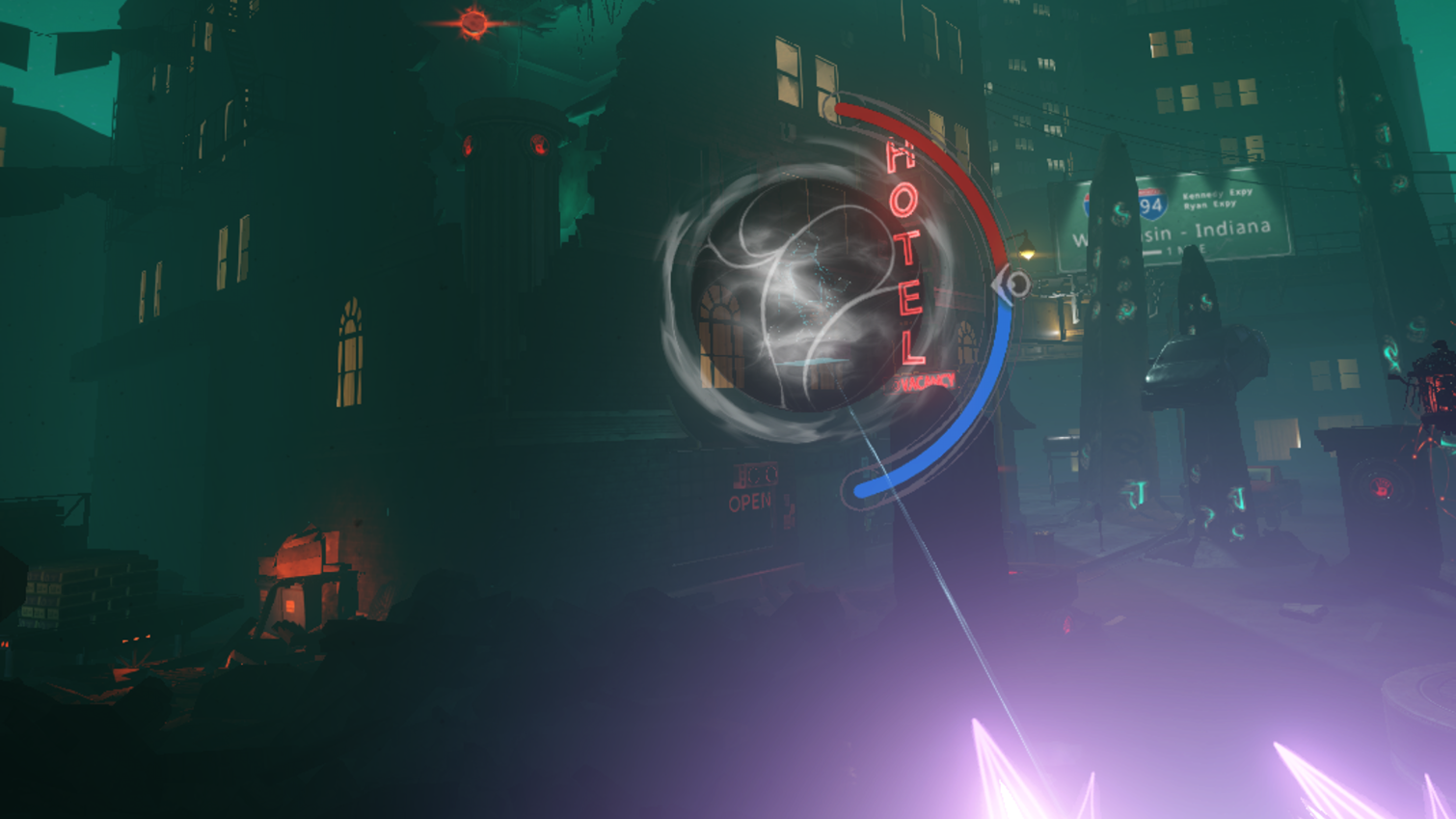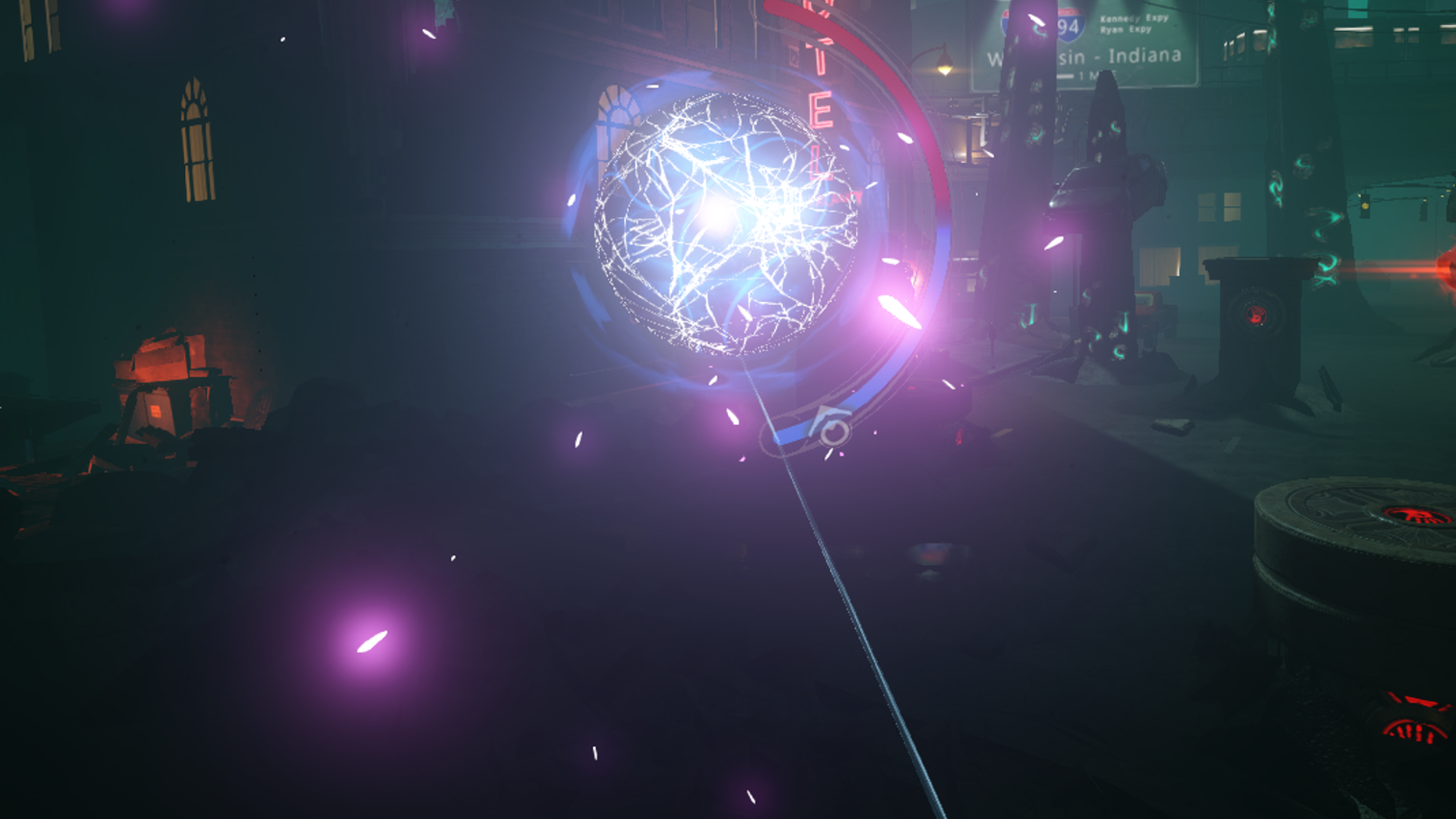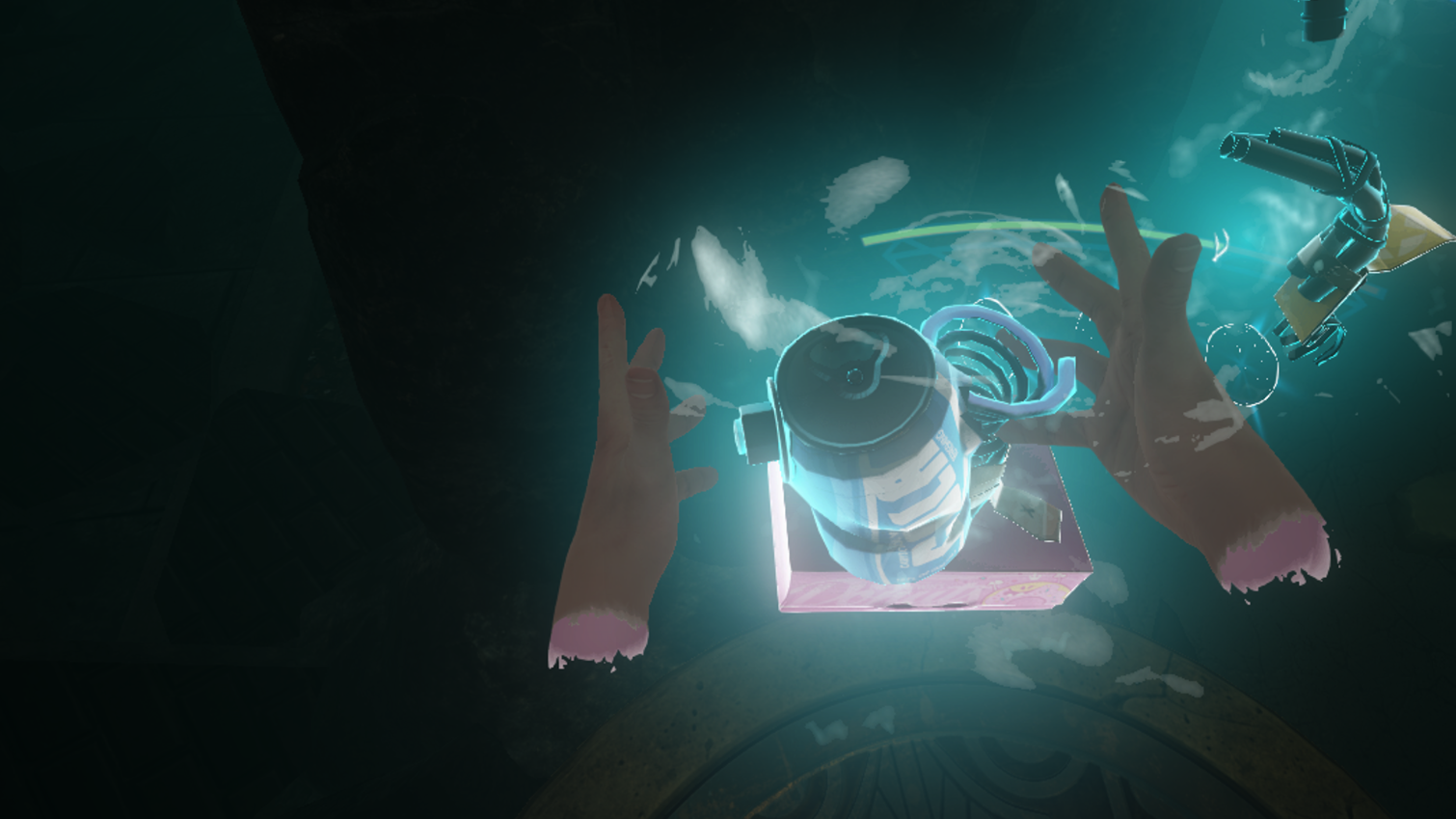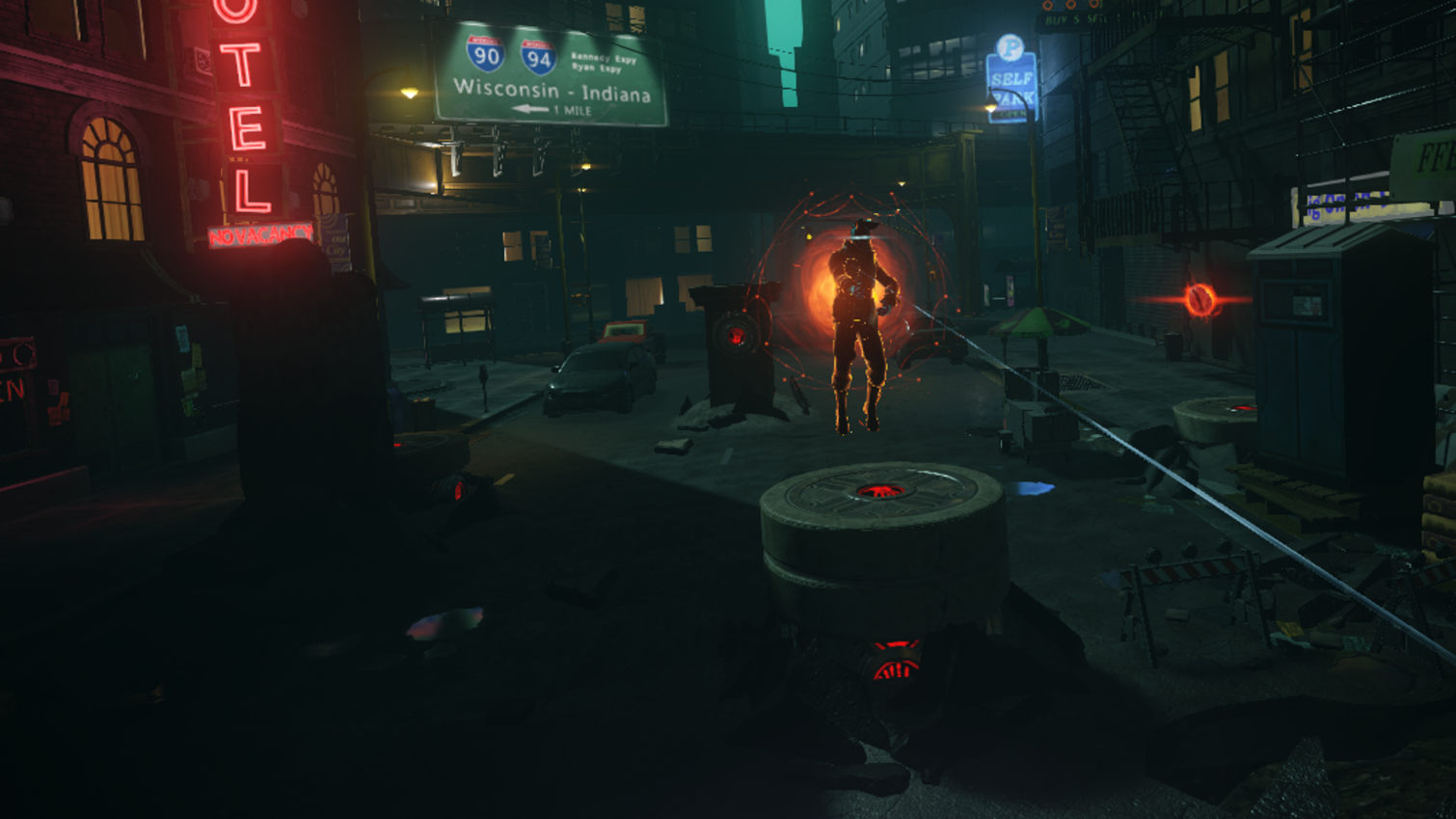'The Unspoken' Is A Fight Club For Wizards, Using Oculus Touch
The first rule about Fight Club: You don’t talk about Fight Club. The same rules apply to spellcasters in The Unspoken; only the stakes are higher. Instead of fists, The Unspoken wield magical powers and spells.
Oculus is preparing to launch the Oculus Touch controllers in early December. The upcoming motion controllers bring hand presence to VR, which opens the doors to many possible experiences. The Unspoken, Insomniac Games’ first person PVP combat game, is one of the first titles that takes full advantage of Oculus’s new controllers.
The Unspoken is Insomniac Games’ third Rift title and its first game with Touch support. It is also Insomniac Games’ first attempt at an esports title; Player vs. player (PvP) combat is the entire premise of the game.
Live And Die By The Code
In the world of The Unspoken, magic is real, although its existence is hidden from most of humanity. Those with magical powers--the spellcasters--“are bound by a code where dueling is everything.” It’s kind of like Fight Club, except the fighters don’t use their fists against each other. They summon magical powers to vanquish their opponents.
At launch, The Unspoken features three distinct classes to choose from: Anarchist, Kineticist, and Blackjack. Each class casts two Primal spells, which you cast with the triggers on each controller. You also get three Gesture spells: Push, Volley, and Guard. You can cast the Primal spells at any time, but you need an Ember to cast a gesture spell. Embers are glowing stones that appear periodically throughout your match, and you must collect them before you opponent does.
Spellcaster duels take place in small arenas that are divided in two. Each player gets one side of the arena and can’t cross into their opponent’s zone.
Spellcasters don’t walk on the ground. They teleport from one raised pillar to another. Each player has a half dozen spots that they can jump back and forth between. Some of the pedestals are raised high, and some of them are near the ground. It's up to you to keep track of where your opponent is at any given time. You don’t want to be on a low pillar if the enemy is looking down on you from above.
Get Tom's Hardware's best news and in-depth reviews, straight to your inbox.
Anarchy In The Streets
As the Anarchist’s, your primal spells cast fireballs from your dominant hand and summon the Arcane Shield from your secondary hand. The fireballs have two power levels. When you pull the trigger of the controller in your dominant hand, you summon a fireball. If you hold the trigger down for a few seconds, the fireball intensifies into a stronger attack. Pulling the trigger on the opposite controller summons the Arcane shield, which blocks other primal spells.
The Anarchist’s Push attack is called Chaos Skull. It lets you summon a flaming, floating skull that homes in on the position of your opponent and explodes when it reaches them. The Anarchist’s Volley attack is called Pyrotechnics. It bombards your opponent with a half dozen firework rockets. For the Guard, the Anarchist pulls shards of glass from the surrounding area to build a temporary shield that protects you as you cast complex spells.
Crushing Kinetic Force
As the name suggests, the Kineticist taps into the forces of kinetic energy. The Kineticist's primal skills include Telekinesis, which allows you to pull objects from your surroundings and hurl them at your adversary. The Kineticist can also summon Force Shield, which wraps your defensive hand in an energy field that repels other primal spells.
The Kineticist relies on objects and debris found in the arena for its heavy attacks. The Debris Scatter push attack fires broken bottles and metal spikes like a shotgun blast. The Kineticist’s Volley attack is ruthless; you get to elevate cars and drop them on your foe’s head.
The Kineticist’s Guard spell is called Force Bubble. It encapsulates you within a bubble that deflects incoming attacks in all directions.
Sharp Knives And A Deck Of Cards
The Blackjack class doesn’t tap into a specific magical force; instead, you rely on spells of illusion to confuse your rivals, and sharp blades to hurt them. The Blackjack’s Primal spells include Spectral Knives, which fires a handful of knives at your opponent, as well as the Mystic Shield, which is a small shield that blocks Primal attacks.
The Blackjack’s Push attack, Disc of Blades, combines multiple throwing knives into a spinning disc that you can fire towards your target. The Blackjack’s Volley attack is called "wildcards." You summon a handful of cards and then fire them at your competitor like you’re Gambit from X-Men.
The Blackjack class’s guard spell is more effective than the Anarchist's and Kineticist's. The other two classes conjure shields that protect you while you stand on one specific pedestal. However, the Blackjack's Spectral Cloak covers every one of your pedestals, and you can hop around from spot to spot and keep your location hidden.
Learn The Ropes From Lenore
Before you make your way to a live match, it's in your best interest to practice with Lenore, an AI character that you can summon for a battle at any time. Lenore will help you learn how to cast your various spells and familiarize yourself with the artifacts. Training also helps you learn how to navigate effectively between pillars and test attack strategies.
Lenore will attack you, but he won’t kill you. Sparring with him can be an effective way to hone your skills.
Mystical Artifacts Of Great Power
Each player can carry up to three mystical objects; these summon powerful spells to help you get the upper hand of your match. You start the game with one artifact, which fills all three of your slots so you can use it up to three times per match. You unlock the rest of the artifacts as you progress through the game.
There’s the Aerogramme, which sends three ghostly apparitions of airplanes at your opponent. The three planes follow the other player around the map wherever he or she ends up.
Cthulhu’s Grasp covers your opponent’s pedestals with deadly tentacles, which forces your foe to stand their ground where they are.
The Clockwork Imp is a winged creature that flies around the map, stealing the other player’s Ember crystals, which takes away their ability to attack you with gesture spells and puts the power in your hands instead.
The Dispelling Censer is a powerful defense spell. No matter what your adversary is about to send your way, the Dispelling Censer disables all active spells.
The Dark Forge is the first artifact that you get. It summons a magical spear that can shatter shield spells.
Once You Have A Golem, You’ve Basically Won
Each battle is best of three. The first match is mostly player skill vs. player skill. You can summon Artifact spells, and you can use gesture spells, but there isn’t much that can tip the scales one way or the other.
In the second and third rounds, you may be able to get control of a towering golem that will all but ensure your victory. Golems are a hard-fought item to acquire, but they are worth the extra effort.
During the second and third matches, you’ll encounter a large glowing orb floating somewhere in the arena. The orb starts off white, but it will change to your color when you attack it. You must hit the orb with several charged primal spells to break it open and gain control of the golem figure. Each time your opponent hits the orb, they gain a little bit of control. If you both try to get control, it can take few minutes for someone to win.
Once you have the golem artifact, you still must summon it, which leaves you vulnerable for a few moments. The golem artifacts come to you in pieces, and it's up to you to put them back together. If possible, it’s a good idea to cast a guard spell before attempting to assemble an artifact.












If you manage to win the fight for control of the golem artifact, and you get the chance to summon it, your victory is nearly a done deal. It’s impossible to avoid all the gigantic golem’s attacks, so unless you haven’t hit your foe yet, you’d be hard pressed to lose that match.
Fast Paced, Skill Based
In The Unspoken, when you get into a fight with an equally skilled opponent, the battles can get heated quickly, with fireballs, blades, and heavy objects hurtling through the air. The one-on-one competition that the game provides leaves little to be desired. The spells are well balanced, and the developers put a lot of polish on the gameplay.
Insomniac Games wants The Unspoken to become a competitive esports title, and from what we’ve seen so far, we believe it has a good chance at drawing in a sizeable fan base.
If you see me on the streets, watch out! My fireballs are coming for you.
Kevin Carbotte is a contributing writer for Tom's Hardware who primarily covers VR and AR hardware. He has been writing for us for more than four years.








